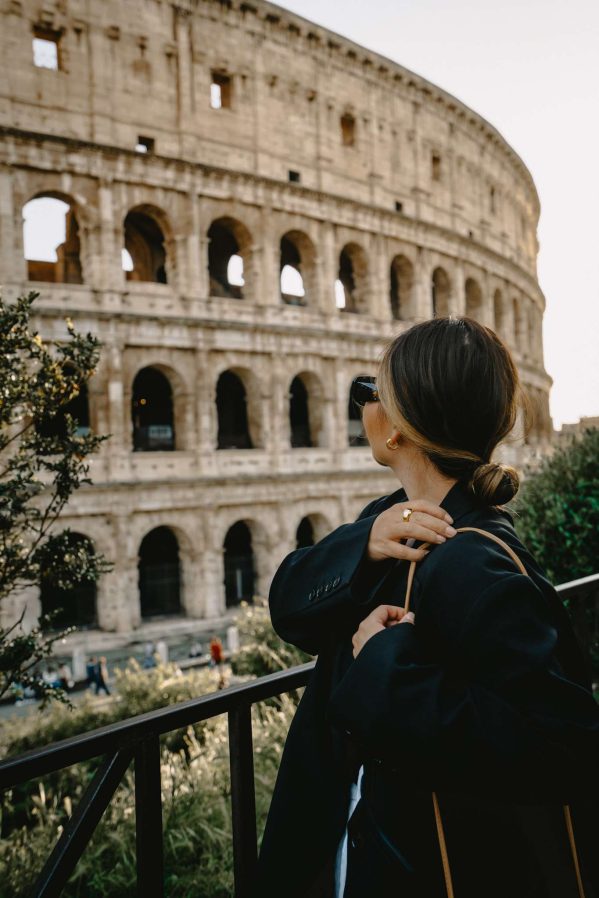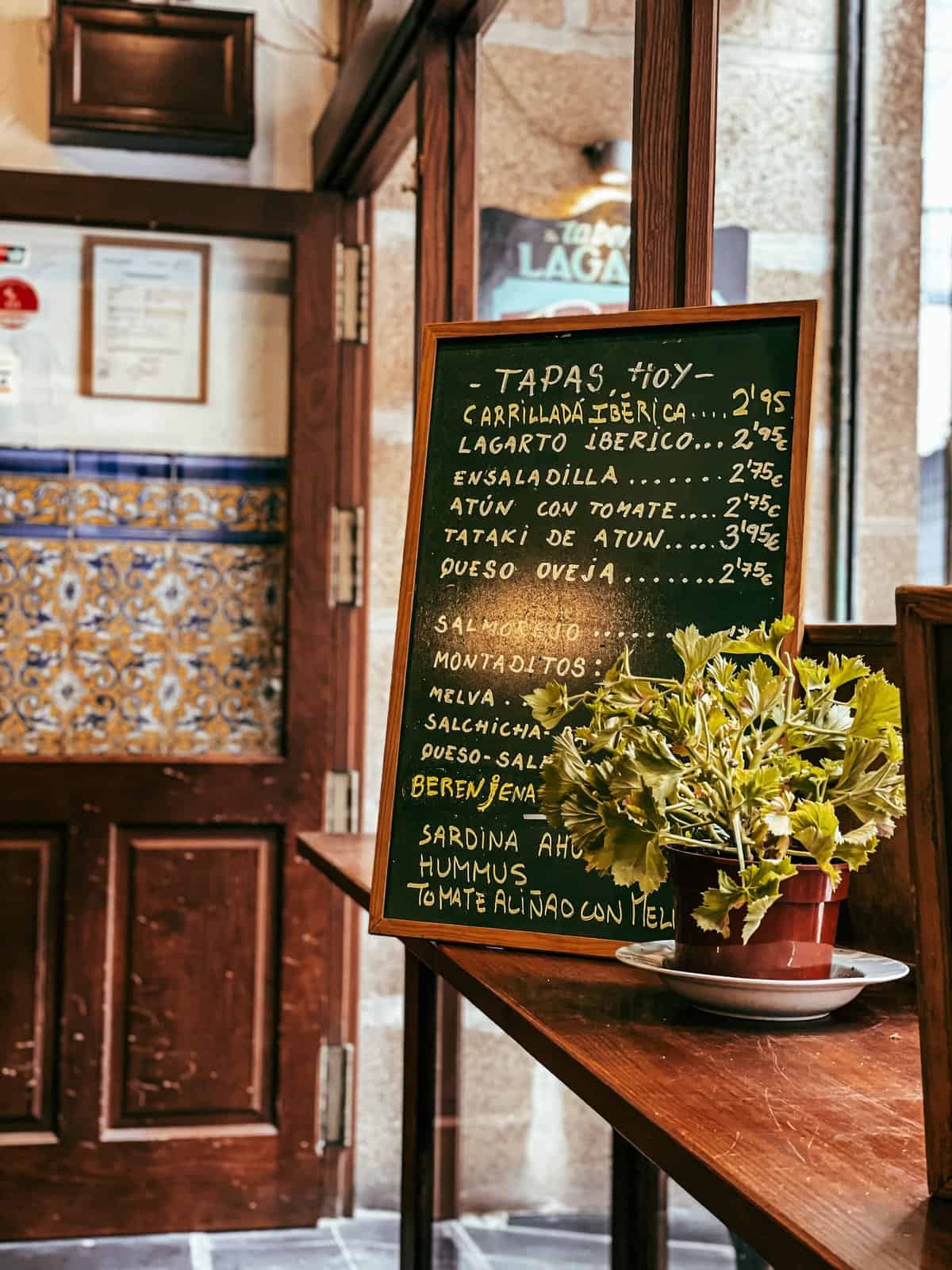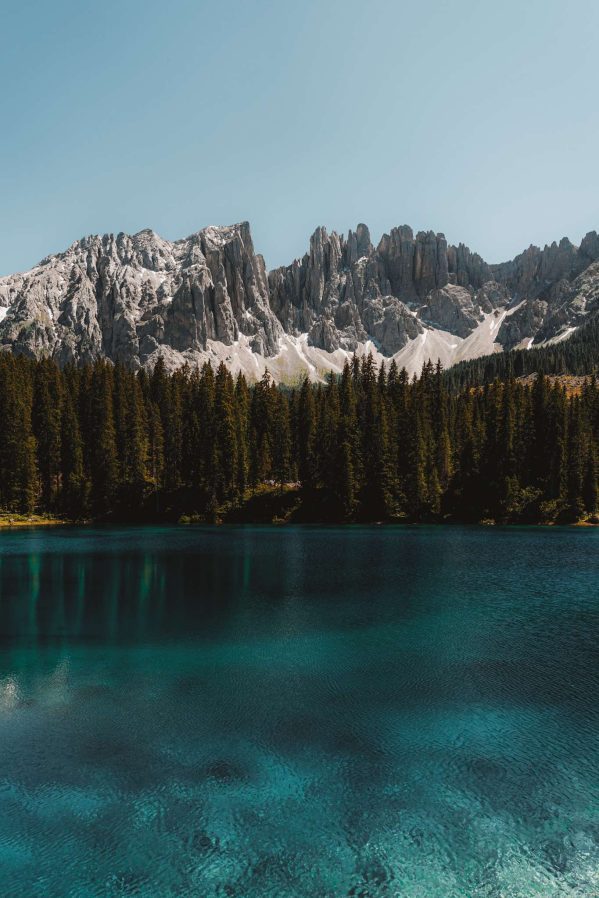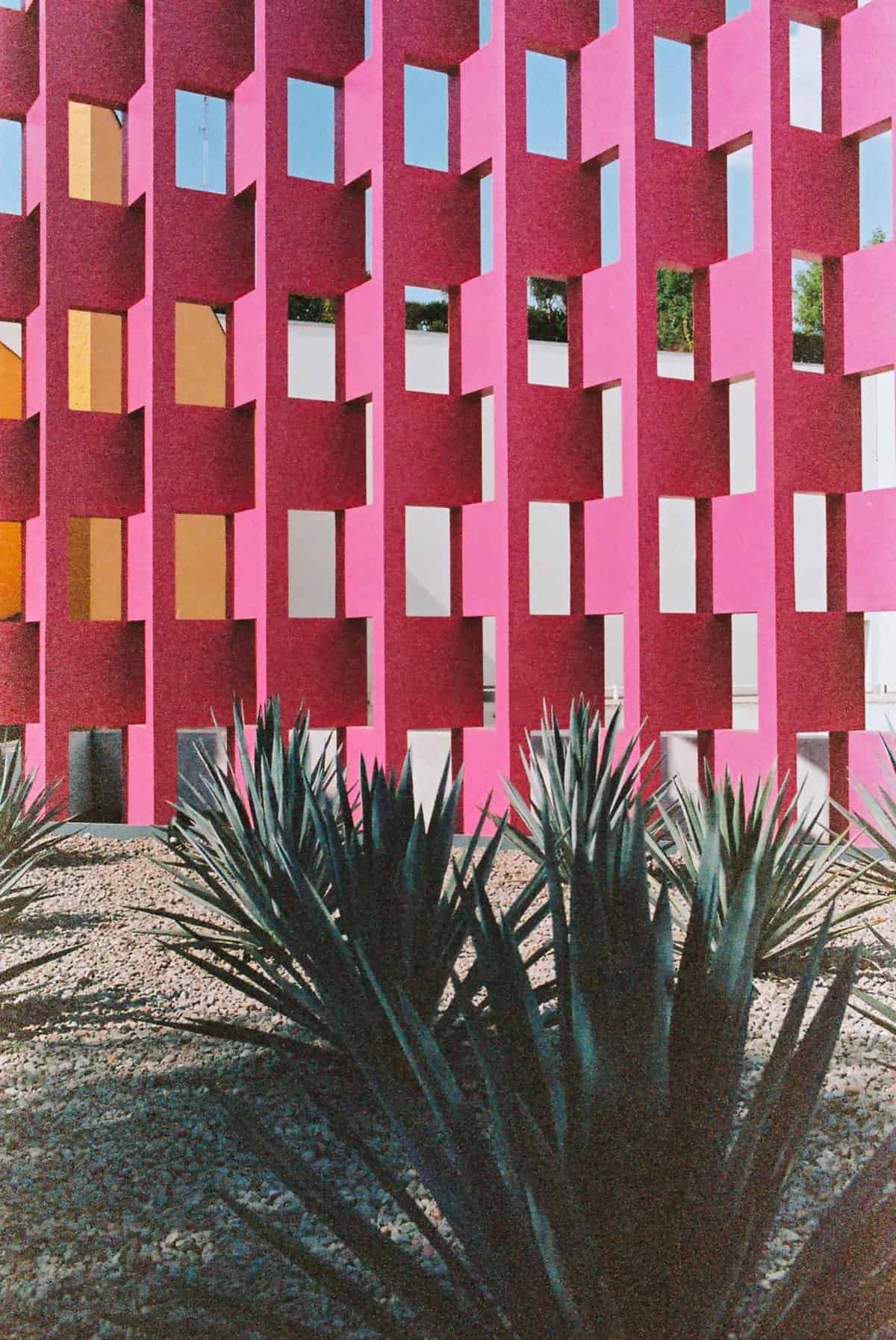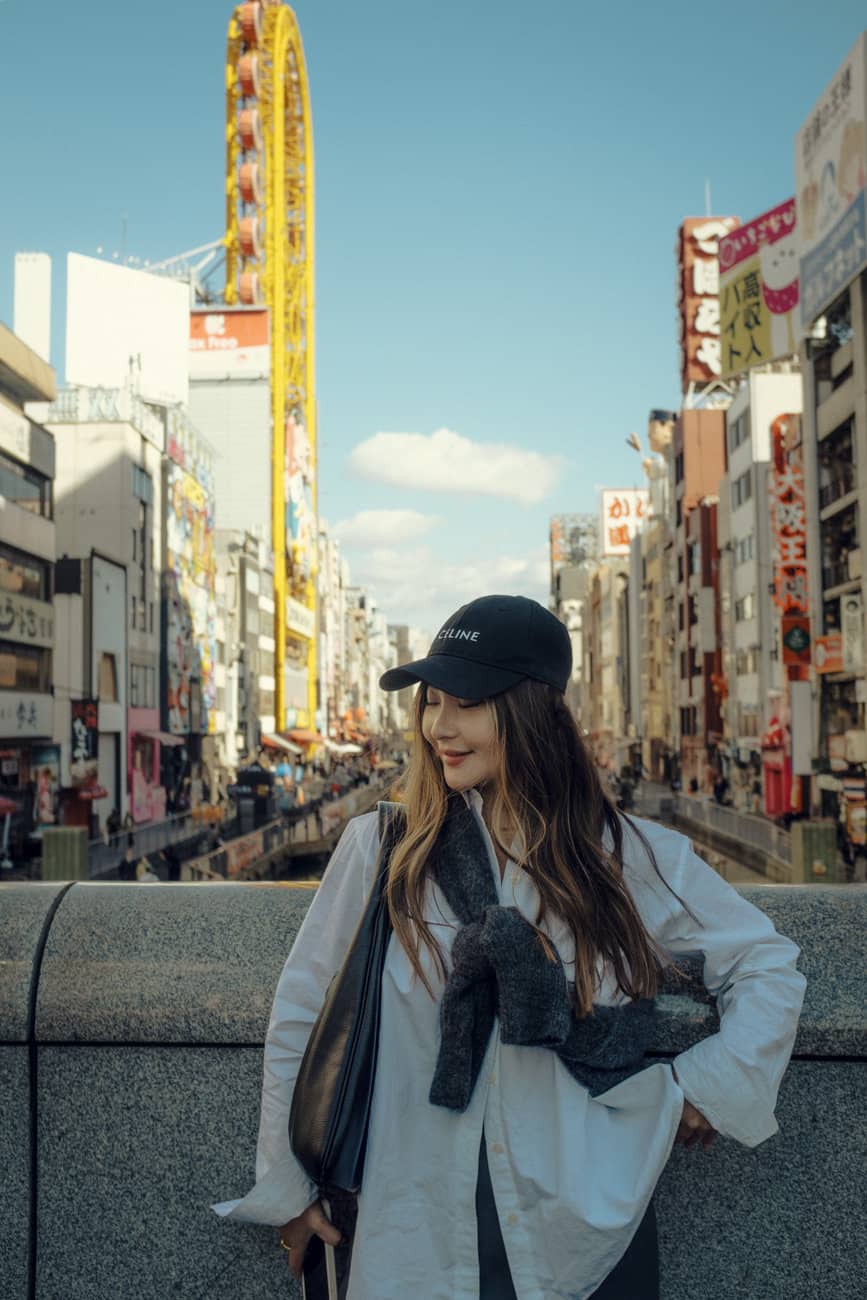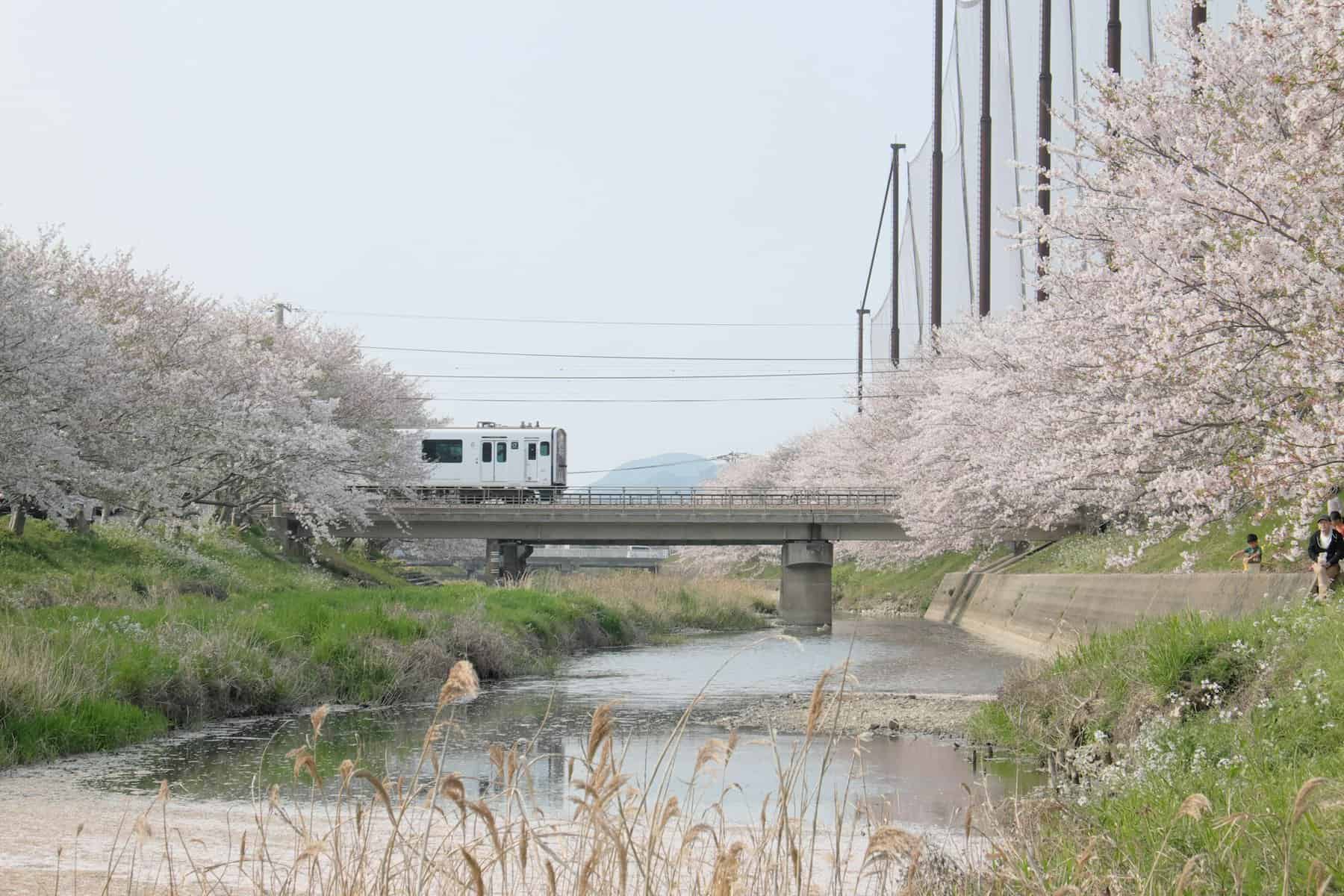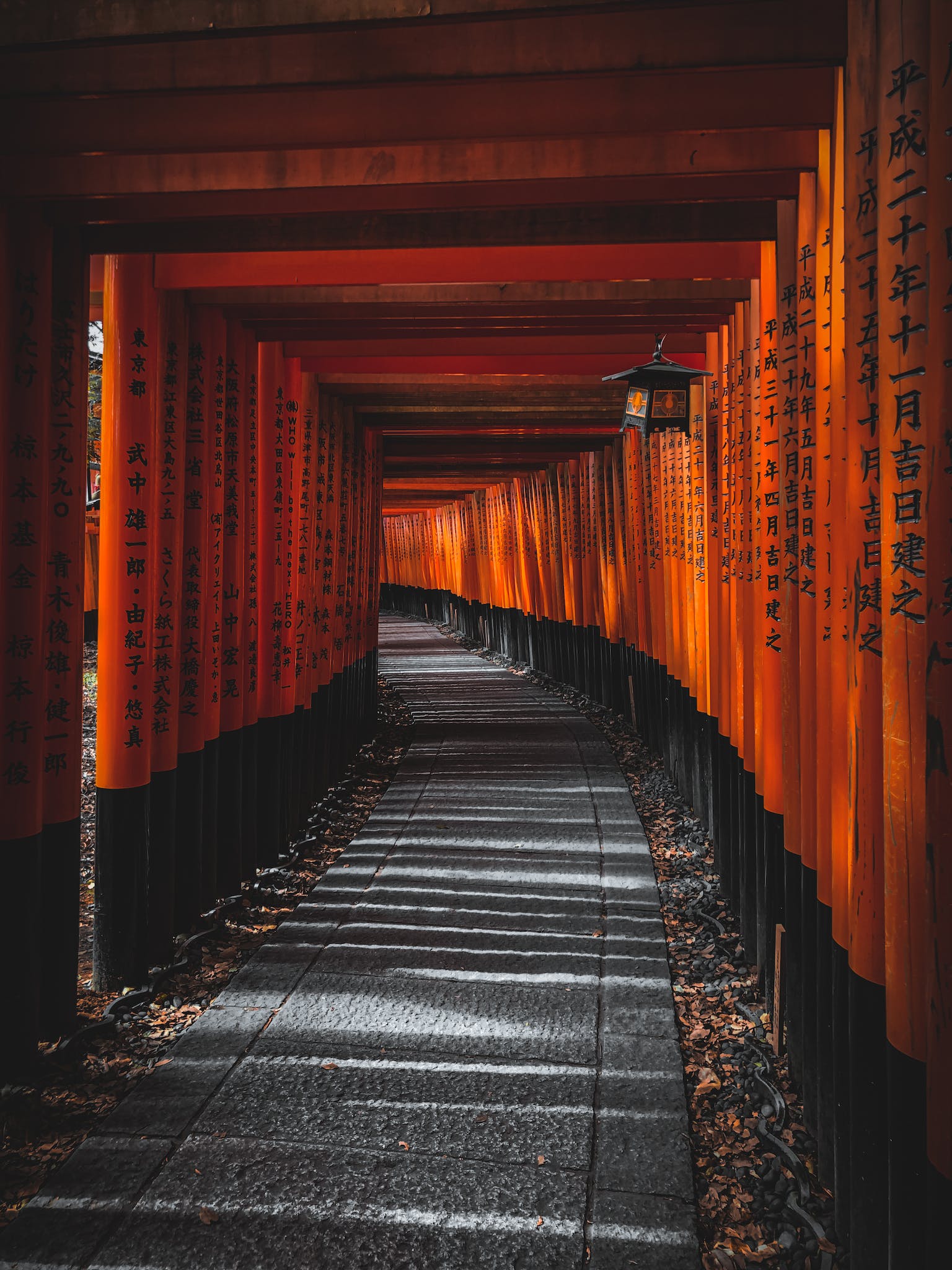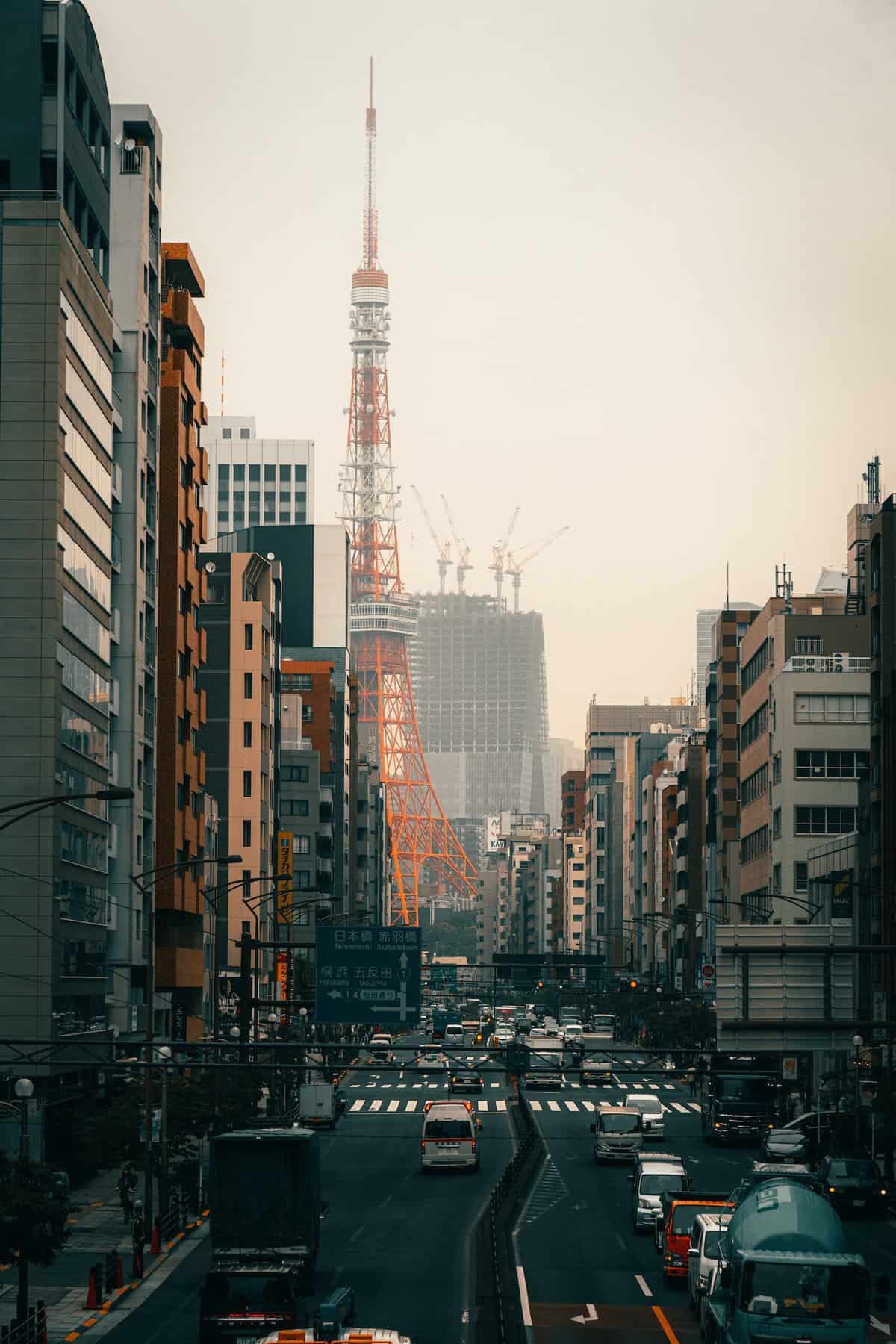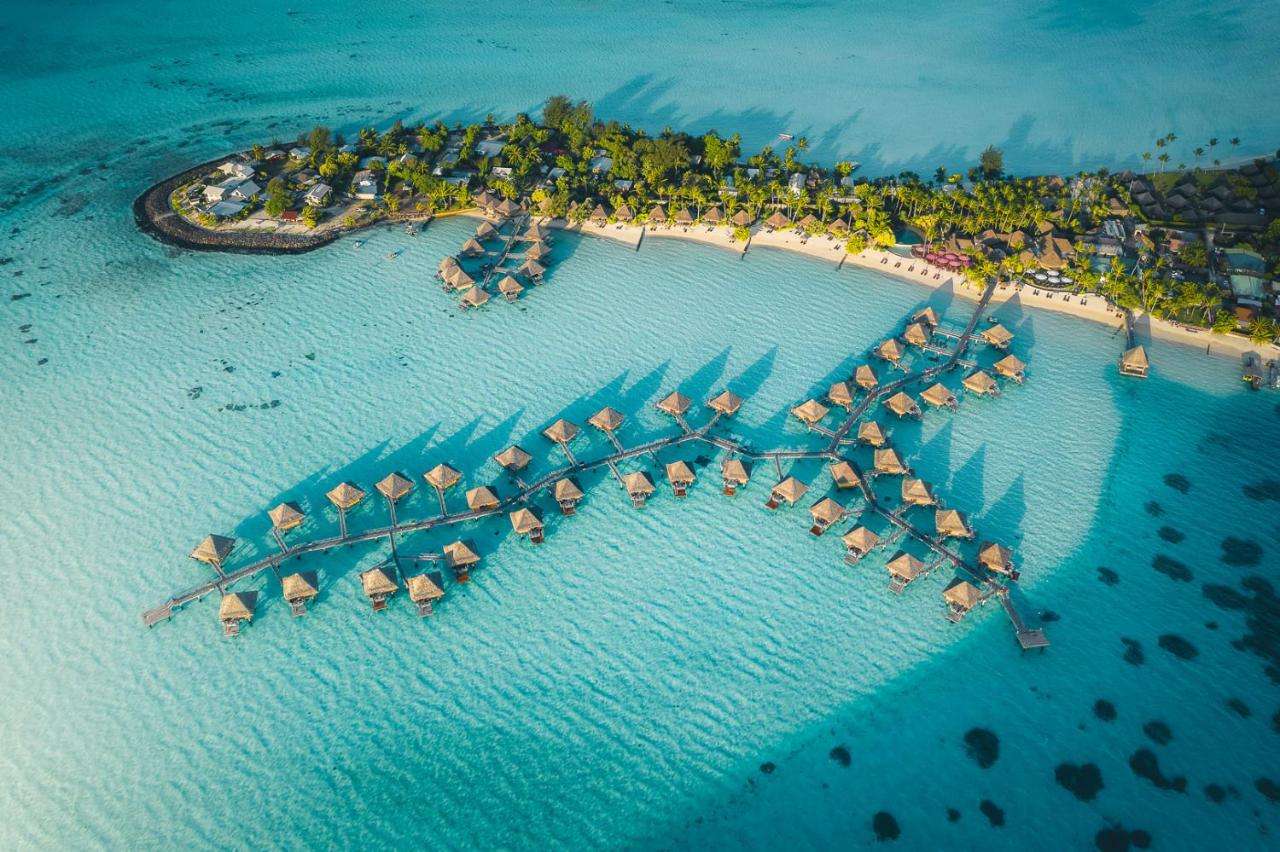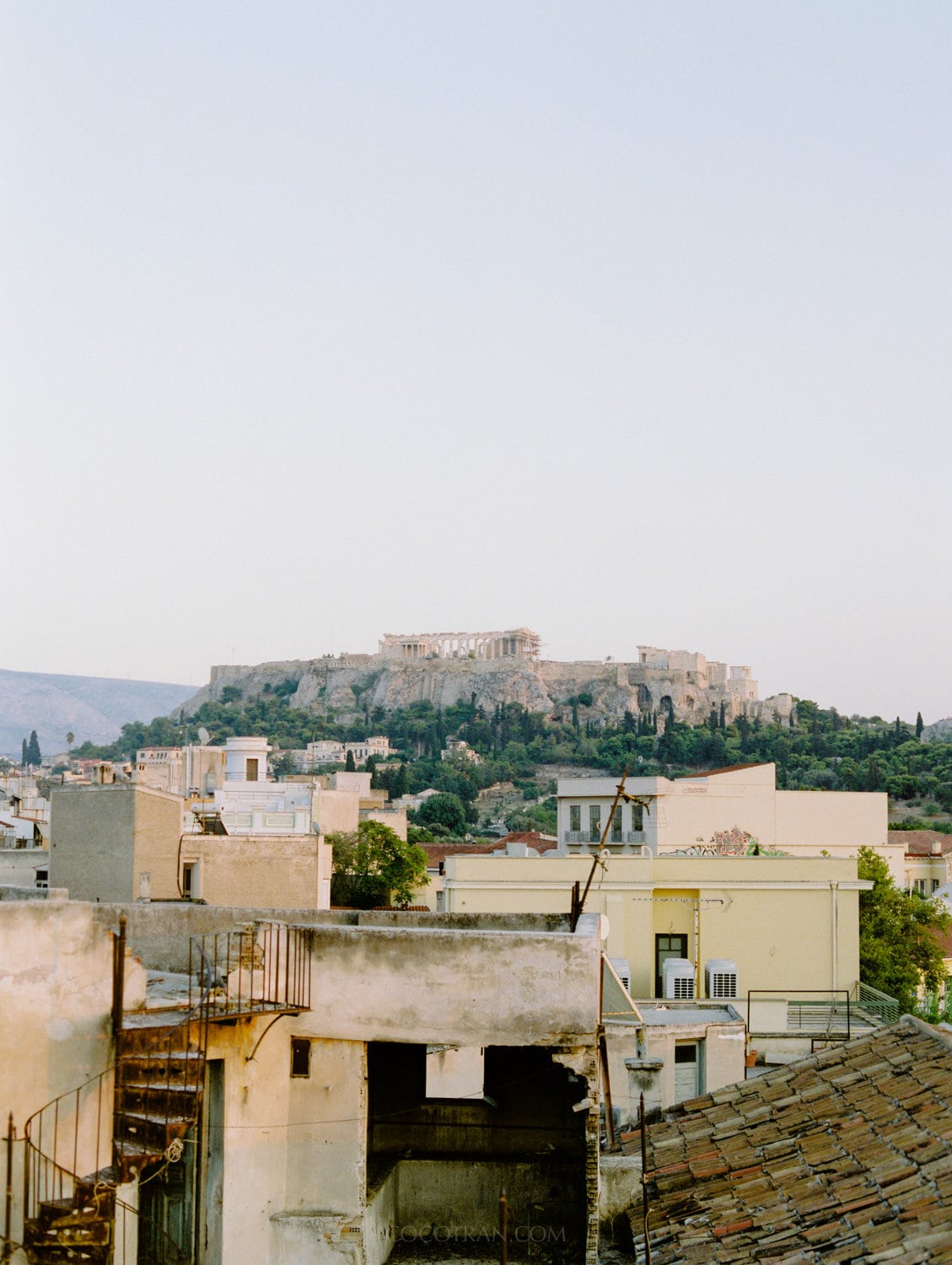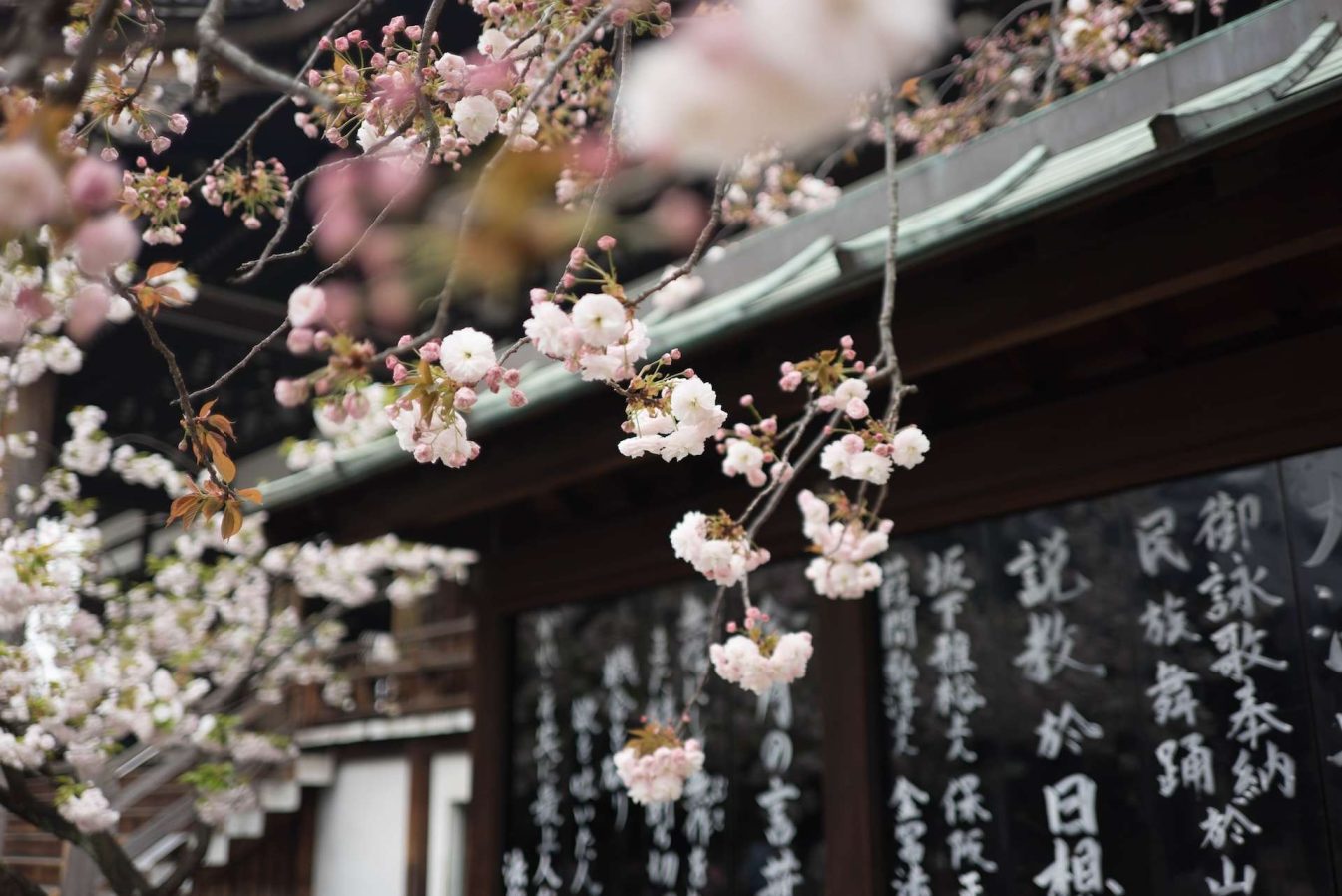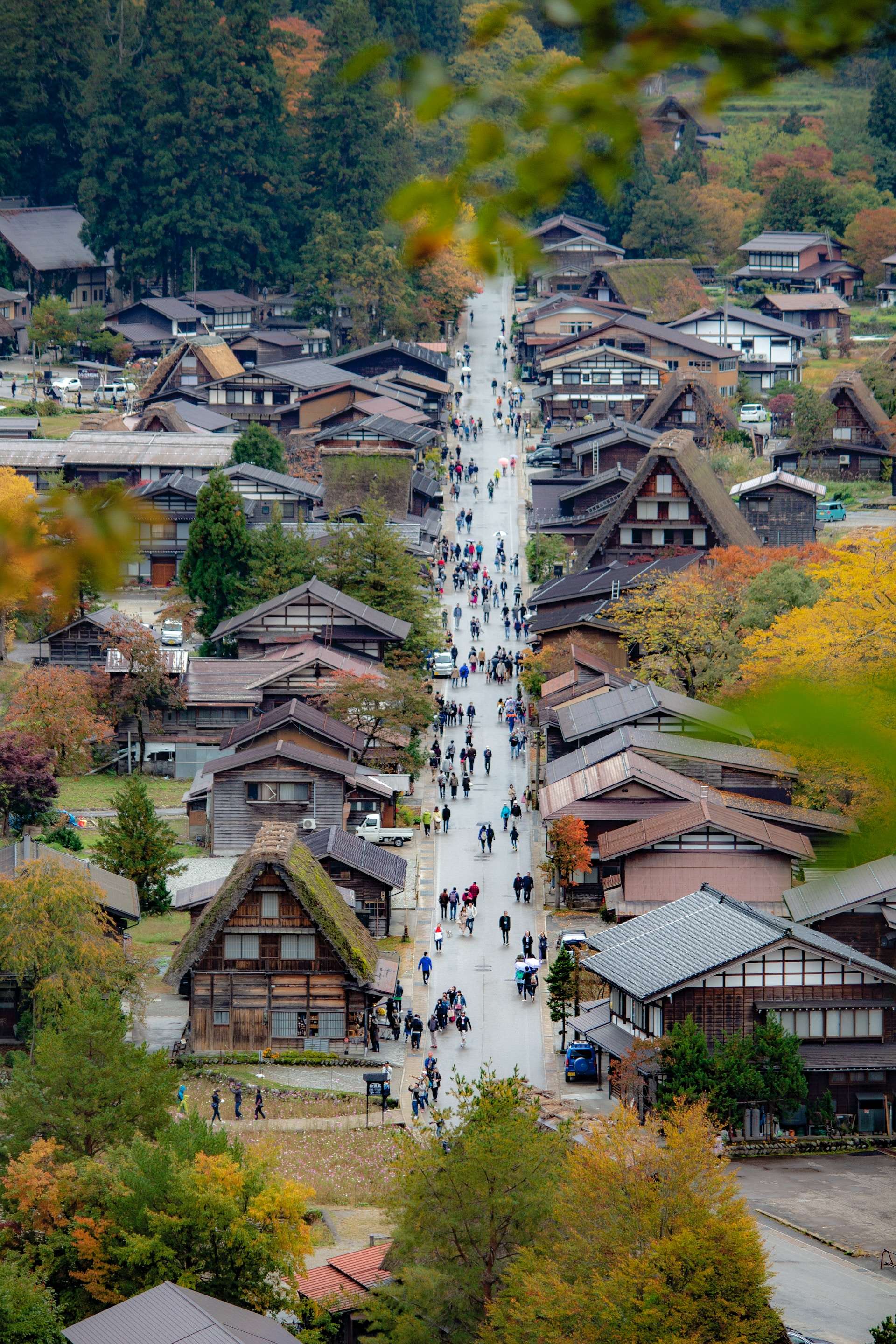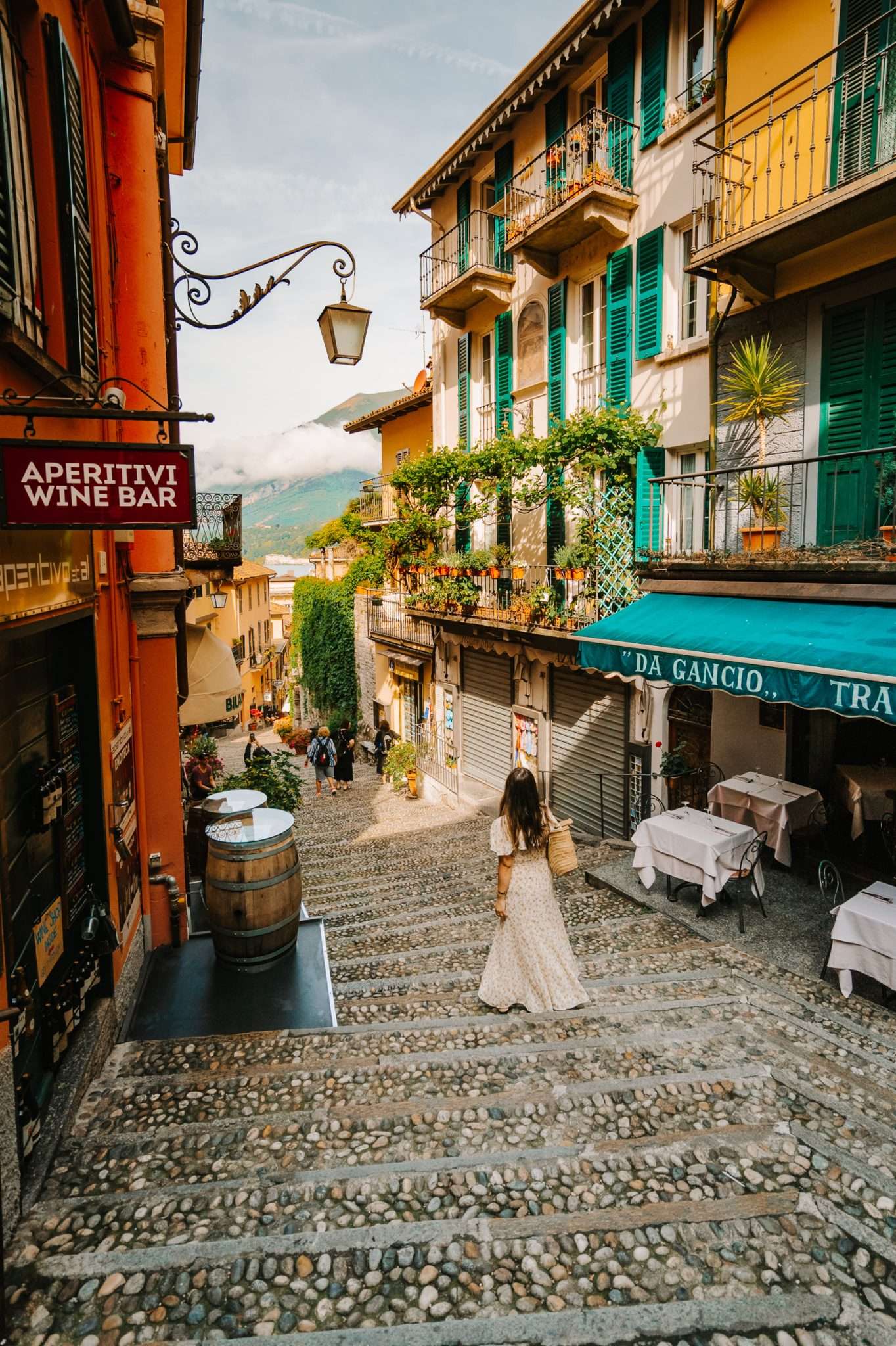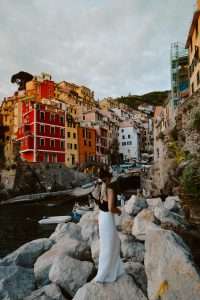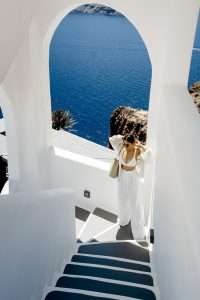10 Best Places to See Mount Fuji in All its Glory
Here are 10 best place to see mount fuji.
Dreaming of catching a glimpse of Japan’s iconic Mount Fuji during your trip to Tokyo? Wondering where to see mt fuji and the best place to see mt fuji views?
READY TO BOOK YOUR TRIP?
Best Travel Resources to plan your trip
more helpful travel resources
*This site contains product affiliate links, and I may get a commission, which costs you nothing extra. Thanks for your support
With the right planning, you can take an easy day trip from the capital to admire majestic views of Fuji-san across lakes, from observation decks, and alongside centuries-old shrines.
Don’t have time to read the full article?
Book this private Mt Fuji day tour from Tokyo— a convenient and comfortable experience with a near-perfect 5 Star rating.
some links may be affiliate links. If you purchase using the link I may get a small commission which costs you nothing extra
This comprehensive guide covers everything you need to know to plan your perfect Fuji viewing day trip, including the best places to see the mountain, top tips for capturing those iconic shots, and key info to help guarantee clear weather and unobstructed views.

The 10 Best Places to See Mount Fuji in All its Glory
No time to read the full article? Here are the key highlights:
- The Fuji Five Lakes region offers jaw-dropping views across Kawaguchiko and Saiko, with famous reflections and pagodas
- Hakone is home to the striking image of Fuji rising behind red torii gates in Lake Ashi
- Iconic views from Hakone and its torii gate, but visibility is lower
- Various observation decks allow you to see Fuji from creative angles high in the trees or suspended over valleys
- Impressive perspectives from Miura Peninsula beaches, Izu Peninsula, Shizuoka City, and Mount Takao
- Unique views while soaking in hot spring baths or skiing down Mount Fuji itself
- Clear sightings more likely November-May when the snow cap is visible
- Sunrise and sunset provide the best lighting and most stunning vistas
- Aim for cooler months between October and March for your best shot at clear weather and visibility
- Early mornings and sunsets usually offer prime lighting and fewer clouds obscuring the peak
- Rent a car for maximum flexibility to chase views as weather shifts
If you want to know the details on how, when, and from where to get the perfect view of Japan’s iconic mountain, read on
About Mt Fuji
Rising to 3,776 meters, majestic Mount Fuji is the country’s tallest peak and most recognizable landmark. For centuries, artists and photographers have tried to capture its imposing yet elegant symmetrical form from various angles, most famously in Hokusai’s 36 Views of Mount Fuji woodblock print series.
key facts about the iconic Mount Fuji in Japan:
- At 12,388 feet (3,776 meters), Mount Fuji is the tallest mountain in Japan and one of the most well-known volcanoes in the world.
- Mount Fuji last erupted in 1707 during the Edo period, spewing cinders and ash down the mountain’s slopes. Before that, its history shows eruptions and quiet periods going back further than 6,000 years.
- The nearly perfectly shaped symmetrical cone of Mount Fuji was produced by layers of erupting lava flows, ash, and rock fragments over time. This “stratavolcano” shape is iconic.
- Mount Fuji has five lakes surrounding its base, created in the calderas of former eruptions. These Fuji Five Lakes – Lake Kawaguchiko, Lake Yamanaka, Lake Sai, Lake Motosu and Lake Shoji – offer picturesque views.
- Mount Fuji has four stations where hiking routes up the mountain start. The 5th Station is accessible by car, has shops and facilities, and is popular just for sightseeing.
- In Edo Period art, where Mount Fuji was a popular subject as sacred to the Japanese, the saying “Red Fuji” symbolized prosperity. Mount Fuji turning red at sunrise due to light scattering is still admired today.
- Mount Fuji is considered one of Japan’s Three Holy Mountains, sacred in Japanese culture and artistic subject, along with Mount Tate and Mount Haku.
- In 2013, Mount Fuji was granted UNESCO World Heritage status as a “Fujisan sacred place and source of artistic inspiration”. It remains a revered pilgrimage site, though a dangerous active volcano.

Best Time See Mount fuji
Mount Fuji’s visibility is notoriously fickle, with low-hanging clouds often obscuring the iconic cone-shaped peak. As a result, timing is everything when it comes to catching postcard-worthy views.
The cooler months between October and March offer your best shot at clear skies and visibility. Summer’s muggy temperatures kick up haze that blocks longer-distance views, while April through September also brings heavy rains.

Tip: I went to Lake Kawaguchiko in November and saw mount Fuji in the sunset evening hours as well as Chureito Pagoda early in the morning.
Aim to visit during the early morning or late afternoon. Midday is when clouds and haze often accumulate, while the low lighting at sunrise and sunset casts Fuji in beautifully dramatic colors.
Best Times to Visit Top Fuji Viewpoints for best place to visit Mount Fuji
Since Mount Fuji’s visibility fluctuates dramatically between seasons and even hours of the day, perfect timing is crucial for clear views free from obscuring clouds and haze.
Here’s an overview of prime times to target for top Fuji viewing spots:
| Location | Best Months | Ideal Time | Why It’s Best |
|---|---|---|---|
| Fuji Five Lakes | Oct – Mar | Sunrise & Sunset | Cool and dry weather, dynamic light |
| Hakone | Jan – Feb | Morning | Winter brings clear skies & snowcap |
| Mishima Skywalk | Feb – April | Late Afternoon | Clear air in spring without summer haze |
| Shiraito Falls | May-July | Morning | Lush greens without crowds or heat |
| Miho Museum | Aug-Sept | Sunset | Escape summer haze in evenings |
In reality, your ability to enjoy clear views relies heavily on closely monitoring hyperlocal weather forecasts and being flexible. Apps like Japan Weather, Weathernews, or Yahoo! Weather offer regularly updated predictions and radar showing areas with sun versus cloud cover.
Use these tools to identify sunny areas and target them in the early morning or late afternoon when shadows and lighting align to provide peak drama and color.
Then don’t hesitate to move locations or adjust your itinerary to capitalize on windows of clear visibility as they arise!
The official Fuji climbing season runs from July 1 to September 10. While climbing the mountain itself obviously allows amazing views from Fuji, visibility of Fuji is lower during these months.
Best Places to See mt fuji viewing spots Mt fuji locations
Viewing Mt. Fuji from Fuji Five Lakes- best place to see mount fuji
Nestled at the northern base of Mount Fuji lies the scenic Fuji Five Lakes region, home to some of the most breathtaking views of the iconic peak.
Spanning Lake Kawaguchiko, Lake Saiko, and Lake Shojiko, the area offers prime vantage points of Fuji reflected in the calm waters of the lakes or standing tall behind local landmarks.
Lake Kawaguchiko for best view of mt fuji
for the best view of mount fuji , head to Lake Kawaguchiko. Lake Kawaguchiko is the most easily accessible and best place to view mt fuji.
- Specifically at Lake Kawaguchi, Oishi Park has the best views of mt fuji. It’s the most developed of the Fuji Five Lakes. Head to the lake’s northeastern shore for classic views of Fuji’s perfect cone rising from the water’s smooth surface.

Chureito Pagoda the best place to see mt fuji and mt fuji best views
- The famous Chureito Pagoda is one of the best views of mount fuji belonging to Arakura Sengen Shrine is also a must-visit. Capture the quintessential shot of the red five-story pagoda framing a massive Fuji in the background.

Lake Saiko provides a quainter lakeside setting thanks to Iyashi-no-Sato Nemba. This scenic open-air museum features reconstructed thatched roof houses and ponds reflecting Fuji in their crystal-clear waters.
Related: 8 Incredible Ryokans with Onsen with Mt Fuji Views & How To Get To Chureito Pagoda & Mt Fuji Day Trip From Tokyo

Finally, visitors flock to Oshino Hakkai’s series of eight ponds fed by Mount Fuji’s spring water. Snap photos of the thatched-roof buildings, mossy rocks, and wooden bridges all overlooking glimpses of Fuji through the cedar trees.
More Japan Articles
Hakone
The mountain town of Hakone with its chain of seven lakes provides visitors with a completely different Fuji experience. Lake Ashi is dominated by iconic shots of the vermillion gate of Hakone Shrine rising from the water, perfectly framing the distant peak.

Can you see mt fuji from hakone?
Yes, for the classic view, head to Moto-Hakone on the lake’s southern shores and look northwest across the still waters to see Fuji hovering behind the torii gate. Or better yet, climb aboard one of the regular “pirate ships” offering sightseeing cruises across Lake Ashi for changing perspectives of Fuji.
Related: 8 Incredible Ryokans with Onsen with Mt Fuji Views & How To Get To Chureito Pagoda & Mt Fuji Day Trip From Tokyo
Shizuoka Observation Decks

Rather than lakeside reflections, Shizuoka prefecture to the south of Mount Fuji offers observation decks and high-altitude walkways providing unique top-down views.
The striking Mishima Skywalk is Japan’s longest pedestrian suspension bridge at 400 meters. Walk out over a river gorge, surrounded by thick forest with Fuji visible on the horizon beyond. Adjacent shops, cafes and attractions like ziplining help make it an all-day adventure.
For dizzying new angles, the Mount Tenjo Ropeway carries visitors via a brief gondola ride to a lofty viewing platform 1,200 meters above Lake Kawaguchiko. Gaze out at unbeatable 360-degree panoramas over the entire lake region with soaring Fuji in the distance.
Yumeno ohashi bridge in Shizuoka – a unique view of Mt Fuji

Yumeno ohashi bridge in shizuoka is a popular Instagram spot of Mt Fuji. The parking is very limited and you need to drive to get here. If you take the train you’ll have to take a taxi to reach this spot.
Cultural Icons with Mount Fuji Backdrops
In addition to natural settings, Mount Fuji makes frequent cameos behind Japan’s most beloved cultural sights as well.
The single best place to experience this intersection of natural and manmade wonder is along Mishima Skywalk in Shizuoka prefecture. Rising behind the striking crimson arched bridge is Fuji in all its glory, juxtaposed against the engineering marvel stretching 400 meters over the forested valley below.
Similar scenes await at Hakone Shrine along Lake Ashi, where the iconic vermillion torii gate frames Fuji’s perfect cone peeking above the calm waters. Or visit Fuji Sengen Shrine at the start of the Yoshida Trail, one of the main routes for climbing Mount Fuji. Here the majestic mountain itself looms behind the shone’s torii, creating a scarcely believable scene.
The Best Places to See Mount Fuji Up Close
If you want proximity along with those picture postcard views, head to the Fuji Five Lakes region located directly north of the mountain. Two particular destinations stand out:
Lake Kawaguchiko Ryokan
Take in the Reflection from the Northern Shore
- Shoot for Lake Kawaguchi’s northeast bank for dazzling photos incorporating water, mountain, and color from seasonal cherry blossoms or fall foliage
- Board the Mount Fuji Panoramic Ropeway to look out over the lake and Mount Fuji’s summit from its observation deck
- Catch a mirrored view of Fuji on especially still days
- Stay at lakefront ryokans like Mizno Hotel or opulent Shuhoukaku Kogetsu with prime vistas

Related: 8 Incredible Ryokans with Onsen with Mt Fuji Views & How To Get To Chureito Pagoda & Mt Fuji Day Trip From Tokyo
Oishi Park in Lake kawaguchiko: The best place to see Mt Fuji
Oishi Park, a scenic spot located on the shores of Lake Kawaguchi in Yamanashi Prefecture.
Oishi Park offers spectacular panoramic views of Mount Fuji and the lake, along with flower-filled promenades that burst into different colors with each passing season.
Tip: There are different seasons for different plants and flowers grown. When I went in November the little ball plants turned from Red to Orange.
Related: Your Ultimate Guide to Visiting Oishi Park to see Mt Fuji

Fujiyoshida – one of the best place to see mount fuji in winter
Chureito Pagoda Vantage Point During Sakura Season
- Frame iconic Mount Fuji behind the five-tiered Chureito Pagoda overlooking the city
- Photograph the contrast of Fujiyoshida’s cherry blossom trees in pastel pink against the mountain
- Hike up Arakura Sengen Park’s 400 steps to reach the renowned outlook
- Comes alive with color in spring, but offers spectacle all year round

Mount Fuji is also easily seen from these additional spots in the Five Lakes area:
- Oshino Hakkai’s observation deck with thatched roof museum in foreground
- Both shores of Lake Yamanakako, the largest lake
- Northwestern bank of Lake Motosuko (famous from Japan’s ¥1000 bill)
Shimoyoshida street across fab cafe Fuji , shimoyoshida

Shimoyoshida street across fab cafe Fuji , shimoyoshida is another popular street right by Lake Kawaguchiko train stop.
Tip: Be mindful here. The street is very busy and standing in the middle of the street to “get the shot” is strictly prohibited and monitored by crosswalk guides.
Hakone’s Famous Torii Gate Vista
Arguably Japan’s most renowned hot springs getaway, Hakone promises captivating views of Mount Fuji perfectly juxtaposed with the region’s nature and culture – when visibility allows, that is.
Aim to travel in transparent weather and use these vantage points:
- Lake Ashi’s southern shores with the iconic red Hakone Shrine torii gate reflecting in the calm waters
- From pleasure cruise boats plying Lake Ashi
- Owakudani’s bubbling sulfur springs and hiking paths (if clear)
- Briefly from select spots along the switchback Hakone Ropeway connecting Togendai and Owakudani

Keep expectations realistic as clouds frequently descend during summer and midday. Arrive early morning or late afternoon to boost your odds!
Pro Traveler Tip: Staying overnight versus Fuji day trips will also improve your chances given the mountain’s notoriously fickle conditions.
Coastal Vantage Points Along Miura & Izu Peninsula
It may surprise some visitors to find the sacred symbol of Japan visible from beach resorts near Tokyo and beyond. Yet for striking contrast between mountain might and seaside scenery, it’s hard to beat what the Miura and Izu Peninsulas have to offer on clear days.
Miura Peninsula
Panoramas Along Beaches from Zushi to Miura
- Nice sightings possible all along the western coastline
- Miho Beach specifically Added to UNESCO World Heritage list for outstanding Fuji juxtaposition
Izu Peninsula’s Western Coast
Backdropped by Oceanfront Near Heda
- Survey mountain grandeur plus coastal charm in harmony around Heda
- Heda Sauce Brewery sells spice mixes featuring herbs grown on Izu’s slopes
Captivating City Scenes from Mount Takao & Shizuoka
It turns out you can catch postcard-worthy tableaus with Mount Fuji contrasted against urban skylines without venturing too far from Tokyo city limits. Two viewpoints in particular allow visitors to take in the dichotomy of preserved nature and cosmopolitan capitals.
Mount Takao
Glimpses from Hiking Trails & Summit Outlooks
- Wooded oasis providing reprieve from Tokyo’s hustle
- Potential (non-guaranteed) peeks visible even from train line
- Better chance of sighting from summit and especially along western ridge trail behind mountain top
Shizuoka City
Sea, Tea Fields & Urbanity in Harmony
Shimizu Port
- Admire mountain above working harbor with ferries coming and going
- Nihondaira Plateau’s elevated gazebo yields unbroken Fuji panorama above coast & town
- Add green tea terraces to complete this trifecta vista highlight
Air Views Through Plane Windows & Airport Decks
Considering its towering height and isolated position, it seems only fitting Japan’s hallmark mountain can be spotted during air travel to and from Tokyo.
Domestic flights headed west often provide in-flight entertainment with near fly-bys past Fuji’s base. Or visit Haneda International Airport‘s observation deck for aerial views across the bay.
Hot Spring Baths with Full Relaxation
What could be better than gazing at Japan’s most famous peak while allowing hot spring waters to ease your worries away?
Though onsen with views are surprisingly uncommon, a blissful handful exists mostly around resort areas near Fuji itself.
Related: 8 Incredible Ryokans with Onsen with Mt Fuji Views & How To Get To Chureito Pagoda & Mt Fuji Day Trip From Tokyo
Unique Angles While Skiing Mount Fuji Slopes
Would you believe it’s possible view Japan’s highest summit while zooming downhill along its lower ridges? The mountain plays host to two compact snow resorts delivering this rare experience.
Fujiten Snow Resort
Larger Slopes on North Face
- Wide selection of runs for size
- Separate children’s park full of icy adventures
- Warm up while surrounded by mountain panoramas inside lodge
Snow Town Yeti
Earliest Opening in Japan (October)
- Compact, but first to kick off ski season with artificial snow covering
- Gentler inclines suited to beginners and families compared to Fujiten
Pro Tip: Lift tickets around ¥5,000 but better value to purchase bundled with gear rentals and insurance
When & Where to See the Iconic Snow Cap
Now that you know the best places view Japan’s quintessential peak, let’s discuss the optimum timing and conditions for sightings.
Aim to visit the Fuji Five Lakes, Hakone, or coastal spots outlined earlier during these prime months and daylight hours for your best shot at seeing the mountain on full display with diamond white summit.
The snow cap sticks around through May, although April’s famous cherry blossoms can obscure things. And summer’s haze gives way to lovely autumn scenes later on, even if visibility typically suffers.
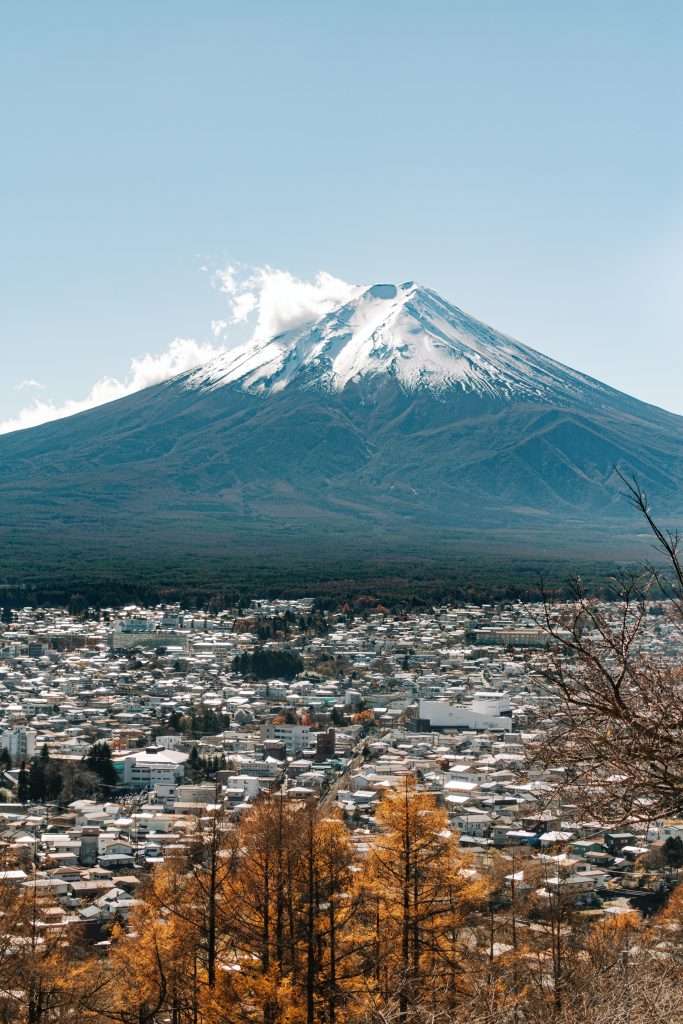
Other Questions About Seeing Mount Fuji
Still have some lingering questions about how, where or when you’ll spot Japan’s most famous vista during your travels? Here’s some additional intel to aid preparations:
Which city is actually closest to Mount Fuji?
- That would be Shizuoka sitting about 80 kilometers away as the crow flies. It’s also a convenient access point to start a rental car road trip through Fuji’s southern vantage points.
What’s the best way to reach Mount Fuji from Tokyo?
- Reach Kawaguchiko via direct highway buses from Shibuya Station, Shinjuku Expressway Bus Terminal or Tokyo Station in around two hours
- Use Odakyu Rail line from Shinjuku to reach the Fujinomiya 5th climbing station in under two hours
- Take shinkansen bullet train to Mishima or Shizuoka Stations then transfer to buses bound for Mount Fuji, lakes or Hakone
Can you actually see Mount Fuji clearly from Tokyo?
- Yes, but only on exceptionally clear days and always in the far distance. For best chances head to the top of Tokyo Skytree, Tokyo Metropolitan Government Building or Mount Takao. Spotting it mid-city even from raised subway platforms depends entirely on temporary conditions.
Tips for Photographing Mount Fuji
Taking home those Instagram-worthy photos of Japan’s iconic peak takes a bit of preparation and perfect timing:
- Pack telephoto lenses like 70-300mm to help zoom in tight on Fuji from across lakes and valleys
- Stop down aperture settings to at least f/8 or f/11 for maximum depth of field
- Use ND filters to balance exposures allowing both bright skies and darker foregrounds
- Shoot during Golden Hour shortly after sunrise or before sunset for prime warm light and color
- Return on multiple days since visibility changes rapidly with shifting weather overtime
- Adjust locations to follow suggestions of local weather reports each morning
Don’t forget to frame Fuji creatively using natural features like cherry blossoms, lush forest scenes, or historic structures such as shrines and pagodas.
Getting to Mount Fuji Viewpoints from Tokyo
Reaching your chosen Fuji observation spots is easiest via rental car or rideshares, allowing flexibility as conditions change. But public transit provides budget-friendly options to major areas as well:
Related: 8 Incredible Ryokans with Onsen with Mt Fuji Views & How To Get To Chureito Pagoda & Mt Fuji Day Trip From Tokyo
Fuji Five Lakes
By Bus from Shinjuku or Tokyo Stations:
- Fujikyu Bus runs direct to Kawaguchiko Station in just under 2 hours
- Shuttle buses available to Saiko Iyashi no Sato from Kawaguchiko
By Train to Otsuki, transfer to Bus:
- JR Chuo Line Limited Express train reaches Otsuki in around 90 mins
- Transfer to Fujikyu bus for final 45 mins to Kawaguchiko
Hakone
By Shinkansen & Local Train via Odawara:
- 45-minute Shinkansen bullet train from Tokyo to Odawara
- 15-minute local Odakyu Line train from Odawara to central Hakone
By Odakyu Line Express:
Mishima Skywalk & Izu Peninsula
By Shinkansen via Mishima Station:
- 45-minute bullet train ride from Tokyo to Mishima
- 15-minute taxi or bus ride to Skywalk
- Continue deeper into Izu Peninsula via local bus or train
Wherever you choose, using Hyperdia or a similar route planning tool can identify the most efficient connections through Japan’s robust public transportation network.
Just be sure to verify current timetables before departing, as trains and buses often reduce frequency during non-peak hours and seasons.
Extending Your Trip to See More of Fuji’s Beauty
While Mount Fuji makes for an easy day trip from Tokyo, spending a night or two in the region allows you to truly chase the ideal views as weather shifts. Plus you gain time to explore cultural sites and natural landscapes in the Fuji foothills.
Here are top options for overnight stays to experience Japan’s iconic symbol from various angles:
Kawaguchiko is the most popular homebase offering Fuji reflection views across the lake. Check forecasts and then watch either sunrise or sunset from northern Oishi Park or eastern Chureito Pagoda lookouts.
Hakone balances epic mountain backdrops with relaxing hot spring resorts. Hop between multiple shorelines and modes of transport like ships or cable cars in search of your perfect Fuji photo ops.
Gotemba at Fuji’s southeastern base has quick access to trails and viewpoints with the added bonus of shopping at Gotemba Premium Outlets below the mountain.
Fuji-Kawaguchiko station sits right on Kawaguchiko lake with lodging and dining at the base of the climb if you’ll attempt to summit Mount Fuji during your stay.
Wherever you choose, spending a night or two within the region allows you to experience Fuji at its finest while discovering all the other natural beauty and cultural traditions this storied area surrounding Japan’s iconic peak holds.
Conclusion
Hopefully, this round-up has properly prepared you to experience Japan’s majestic symbol from all the optimal angles during your upcoming travels. While a stunning Mount Fuji sighting can never be guaranteed due to the fickle weather, visiting the cherry-picked locations at the suggested months and times will certainly tilt luck in your favor!
Just remember: allow ample time to enjoy this moving, meaningful cultural icon that the Japanese people love so much rather than rushing to cram Fuji-san into an overpacked schedule. No matter what happens, a glimpse of the country’s spiritual crown jewel is sure to provide an unforgettable travel moment.
Related: 8 Incredible Ryokans with Onsen with Mt Fuji Views & How To Get To Chureito Pagoda & Mt Fuji Day Trip From Tokyo



